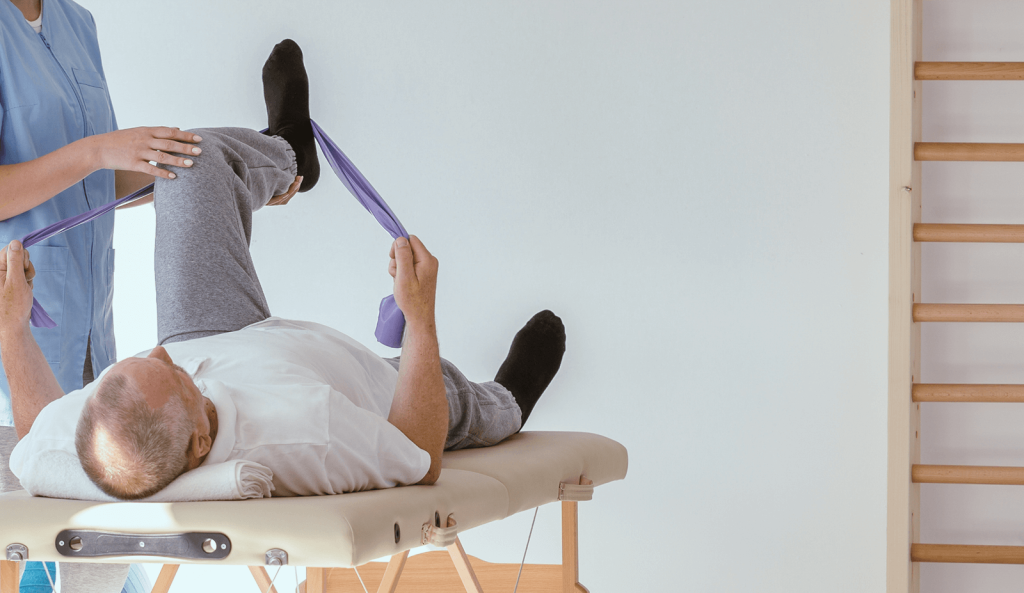
Sciatica is more than just a nagging backache. It’s a sharp, radiating pain that travels from the lower back, through the hips and buttocks, and often down one leg. It can range from mild irritation to a debilitating discomfort that disrupts daily life, sleep, and movement.
This type of pain is caused by irritation or compression of the sciatic nerve, the largest and longest nerve in the human body. It typically results from a herniated disc, spinal stenosis, or tight muscles, especially the piriformis, in the lower back or pelvis.
But here’s the good news: for most people, sciatica can be improved, or even resolved, without surgery, through targeted exercises, stretches, and postural correction.
Let’s break down how sciatica happens, what makes it worse, and what truly helps.
Understanding the Sciatic Nerve and What Causes Sciatica
The sciatic nerve originates from the lower lumbar spine (L4–S3) and runs down through the buttocks and the back of both legs. It controls the muscles in the back of the thigh, part of the lower leg, and the foot. When it becomes irritated, inflamed, or compressed, it causes symptoms such as:
- Sharp or burning pain down one leg
- Numbness or tingling in the leg or foot
- Muscle weakness
- Worsening pain with prolonged sitting, standing, or sudden movements
Common Causes of Sciatica
- Herniated or Bulging Disc
When the cushioning disc between vertebrae protrudes, it can press against the sciatic nerve roots. - Spinal Stenosis
A narrowing of the spinal canal puts pressure on the nerve roots. - Piriformis Syndrome
The piriformis muscle, located deep in the buttock, can spasm and irritate the sciatic nerve that runs underneath or through it. - Degenerative Disc Disease
Disc wear and tear from aging can result in instability or compression. - Poor Posture & Muscle Imbalances
Slouching, sedentary behavior, and weak core muscles can create the conditions for nerve compression.
How Movement Helps: Why Exercise Is Key to Sciatica Relief
While sciatica often flares with movement, the worst thing you can do is avoid activity entirely. Gentle, consistent motion is essential for healing because it:
- Improves blood flow to the injured area
- Reduces muscle tightness
- Relieves nerve pressure through better alignment
- Strengthens supporting muscles that reduce future compression
What to Avoid
During a flare-up, certain activities can worsen symptoms:
- Heavy lifting
- High-impact exercises (like running or jumping)
- Twisting the spine
- Prolonged sitting or lying down without movement
Instead, focus on gentle, controlled exercises and stretches designed to relieve sciatic nerve tension.
Effective Sciatica Stretches and Exercises
1. Pelvic Tilts
Purpose: Strengthens the lower abdominal muscles and stretches the lower back.
How to Do It:
- Lie on your back with your knees bent and feet flat.
- Gently flatten your back against the floor by tightening your stomach muscles.
- Hold for 5 seconds, then relax.
- Repeat 10–15 times.
2. Knee-to-Chest Stretch
Purpose: Relieves pressure in the lower spine and glutes.
How to Do It:
- Lie on your back with both knees bent.
- Bring one knee up to your chest while keeping the other foot on the floor.
- Hold for 20–30 seconds.
- Switch legs and repeat.
- Do 2–3 rounds per side.
3. Piriformis Stretch
Purpose: Loosens the piriformis muscle, which may be compressing the sciatic nerve.
How to Do It:
- Lie on your back with your knees bent.
- Cross one ankle over the opposite knee.
- Grab the thigh of the leg still on the floor and gently pull toward your chest.
- You should feel a stretch in your glutes.
- Hold for 30 seconds, switch sides.
4. Cat-Cow Stretch
Purpose: Mobilizes the spine and reduces stiffness.
How to Do It:
- Get on hands and knees in a tabletop position.
- Inhale, arch your back (cow pose), lifting your head and tailbone.
- Exhale, round your spine (cat pose), drawing your chin toward your chest.
- Repeat for 8–10 cycles.
5. Bird-Dog
Purpose: Strengthens core and improves spinal stability.
How to Do It:
- Start in a tabletop position.
- Extend one leg and the opposite arm, keeping your back flat.
- Hold for 5 seconds, and return to start.
- Repeat 10 times on each side.
6. Wall Hamstring Stretch
Purpose: Reduces tension in tight hamstrings that can aggravate sciatica.
How to Do It:
- Lie on your back near a doorway.
- Place one leg up the wall, the other flat on the floor through the doorway.
- Keep the raised leg straight.
- Hold the stretch for 30–60 seconds.
- Switch sides.

Supportive Lifestyle Habits for Long-Term Relief
1. Improve Your Posture
Slouching compresses the spine and weakens core muscles. Whether standing, walking, or sitting, practice spinal alignment by:
- Keeping feet flat and knees at 90° when sitting
- Aligning ears over shoulders
- Avoiding prolonged static positions
2. Strengthen the Core
Weak abdominal and glute muscles mean more strain on the lower back. Add in core-focused exercises like:
- Glute bridges
- Modified planks
- Abdominal bracing
3. Move Throughout the Day
Avoid long periods of sitting. Set a timer to stand, walk, or stretch every 30–60 minutes. The movement maintains flexibility and spinal hydration.
4. Sleep with Spinal Support
Use a firm mattress and supportive pillow. Try sleeping on your side with a pillow between your knees to keep the spine aligned.
5. Apply Heat or Cold Therapy
- Cold packs reduce inflammation during acute flare-ups
- Heat therapy improves blood flow and eases muscle tightness during recovery
Apply for 15–20 minutes as needed.
6. Manage Stress
Chronic stress can lead to muscular tension, poor sleep, and higher pain perception. Helpful tools include:
- Breathing exercises
- Mindfulness meditation
- Gentle Yoga
When to Seek Professional Help
While many people improve with exercise and self-care, seek medical guidance if:
- Pain persists beyond 6–8 weeks
- You experience numbness or weakness in the leg or foot
- Pain worsens with movement or spreads to both legs
- You lose bowel or bladder control (seek emergency help immediately)
A physical therapist, chiropractor, or orthopedic doctor can help identify the cause of your sciatica and tailor a safe, effective treatment plan.
Keep It Consistent
Sciatica can be painful and limiting, but it’s not a life sentence. With the right stretches, strengthening routines, and supportive habits, most people can significantly reduce their symptoms or eliminate them entirely.
Consistency is the key. Start slowly, listen to your body, and make adjustments as needed. Over time, your spine will become more resilient, and that radiating pain will fade, replaced by strength, mobility, and confidence in how your body moves.
⚠️ Disclaimer
This article is generated with AI assistance and is meant for general information purposes only. It is not a substitute for medical advice, diagnosis, or treatment. Always consult your doctor or a licensed physiotherapist before starting any new exercise program for sciatica. HealthX is not liable for any consequences resulting from the use of this information.












